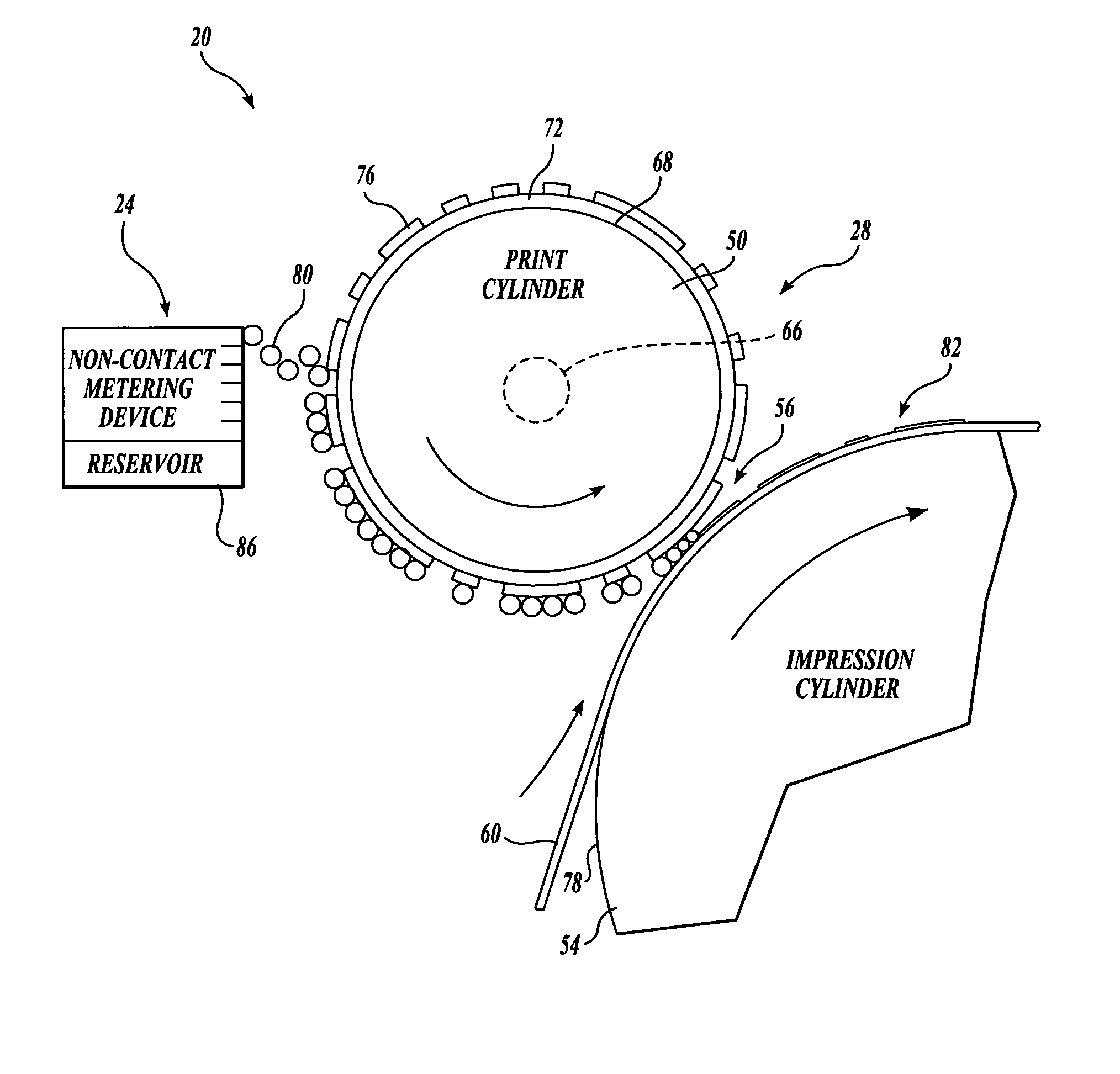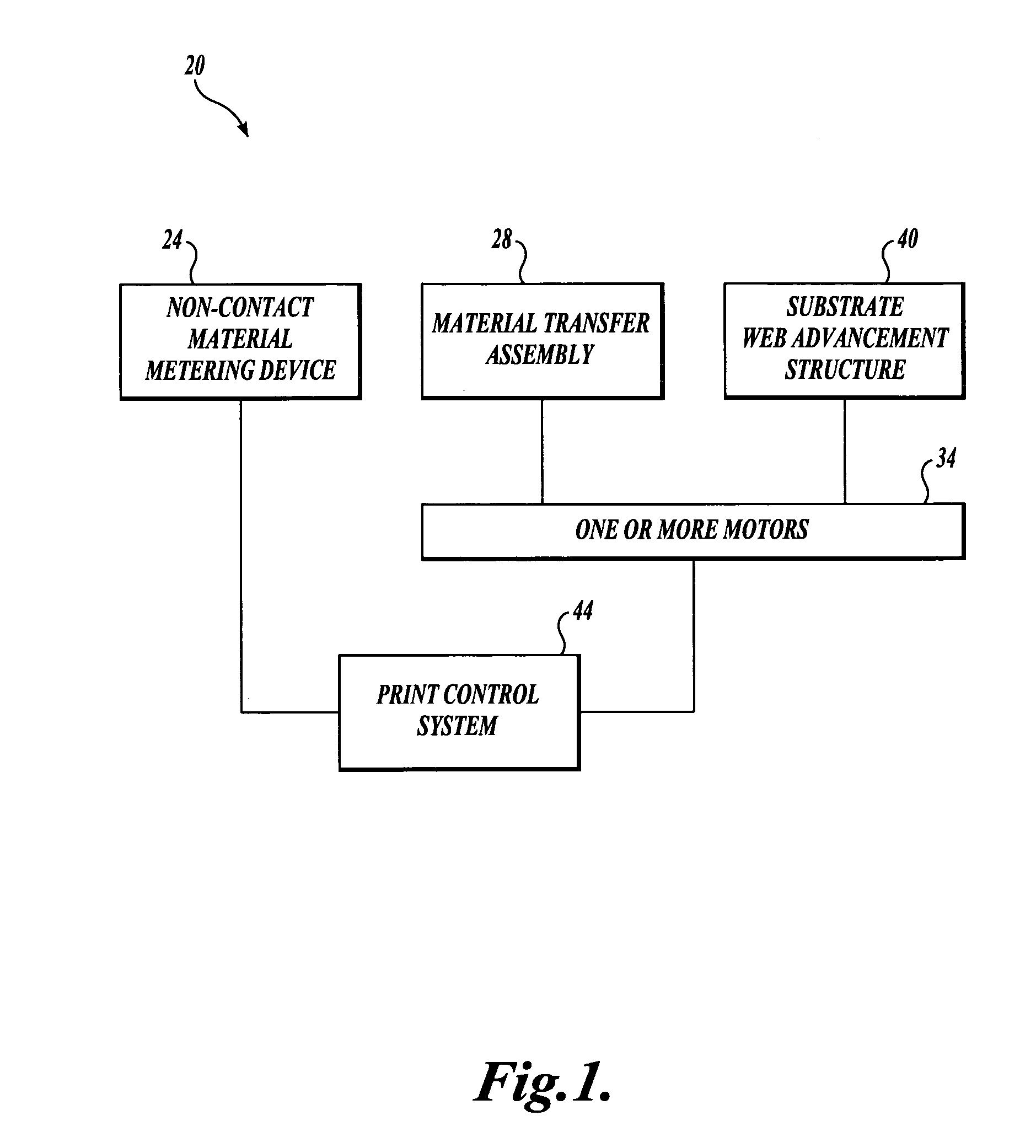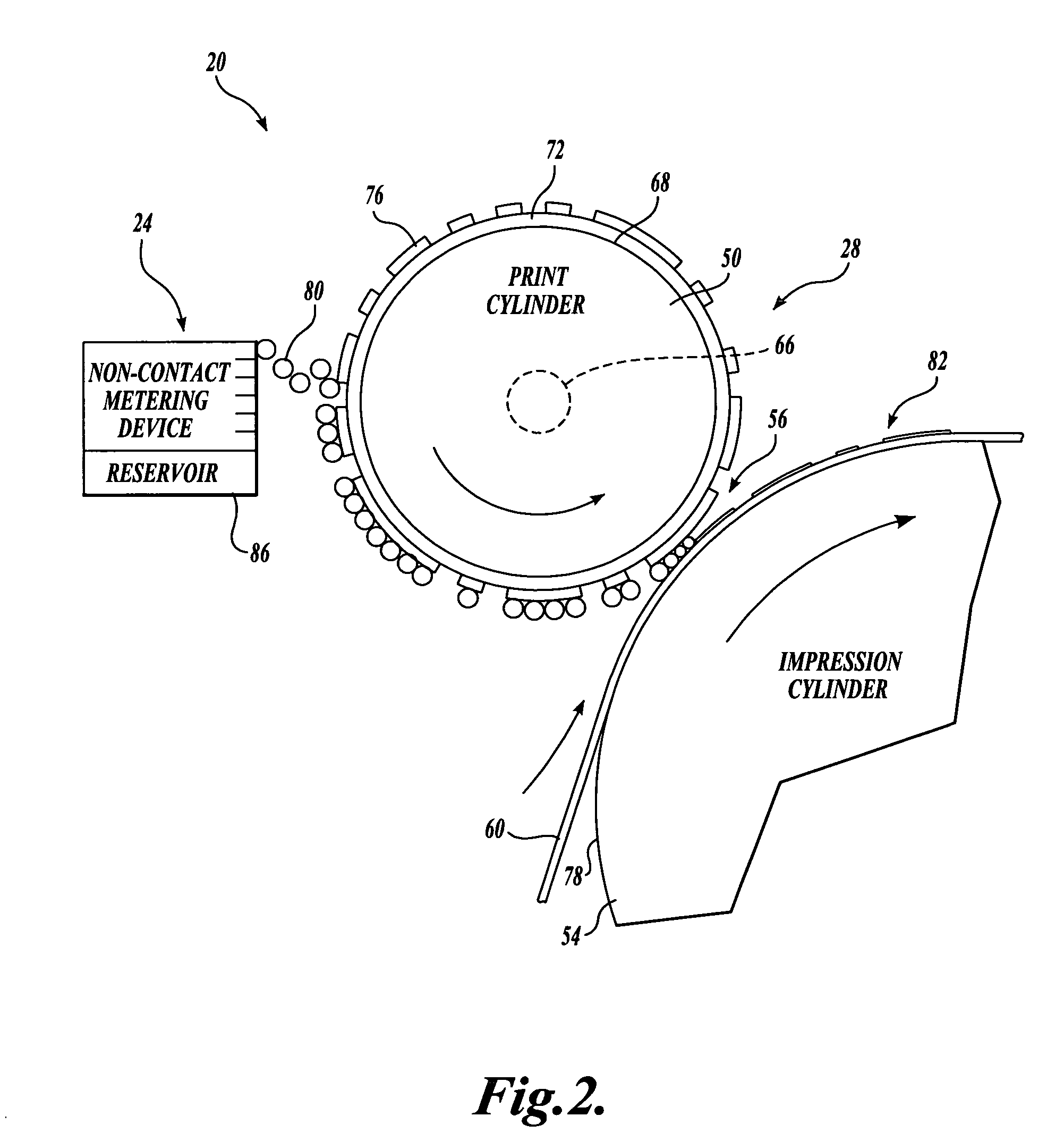Systems and methods for additive deposition of materials onto a substrate
a technology of additive deposition and substrate, which is applied in the field of printing systems, can solve the problems of inability to meet the stringent design requirements of printed electronics, the current knowledge of the technology of fully additive printing electronics, and the slow and well known process
- Summary
- Abstract
- Description
- Claims
- Application Information
AI Technical Summary
Benefits of technology
Problems solved by technology
Method used
Image
Examples
Embodiment Construction
[0036] Embodiments of the present invention will now be described with reference to the accompanying drawings where like numerals correspond to like elements. The following description provides examples of systems and methods for fabricating printed electronic devices with polymeric and non-polymeric materials in a fully additive process. The systems and methods of the present invention may also be suitable for use in printing color graphics, or to color, coat, varnish, or apply other surface treatments to a variety of substrates. The following examples generally describe the systems and methods as a two stage printing process that includes a digital first stage in the form of a non-contact material metering device, such as one or more digital inkjet heads, vapor deposition systems, aerosol systems, etc., for selectively discharging a metered quantity of material, and an analog second stage, such as flexographic print and impression cylinders, for transferring the material deposited...
PUM
 Login to View More
Login to View More Abstract
Description
Claims
Application Information
 Login to View More
Login to View More - R&D
- Intellectual Property
- Life Sciences
- Materials
- Tech Scout
- Unparalleled Data Quality
- Higher Quality Content
- 60% Fewer Hallucinations
Browse by: Latest US Patents, China's latest patents, Technical Efficacy Thesaurus, Application Domain, Technology Topic, Popular Technical Reports.
© 2025 PatSnap. All rights reserved.Legal|Privacy policy|Modern Slavery Act Transparency Statement|Sitemap|About US| Contact US: help@patsnap.com



